The Best And Worst Versions of Every Myers-Briggs® Personality Type
A lot of my type descriptions focus on each of the personality types at their average or best. But what happens when you’re trying to type someone as they are exuding their worst capabilities and weaknesses? That’s what this post is all about! This post will help you to quickly define the good and bad tendencies of each type so that you can understand yourself and others better.
KEEP IN MIND: At our worst, we probably don’t do every single thing listed here. There are many different ways that type can display itself at its worst, and I’m listing the most frequent examples here.

Not sure what your personality type is? Take our new personality questionnaire here. Or you can take the official MBTI® here.
Table of contents
- The Best and Worst Versions of Every Myers-Briggs® Personality Type
- ISTJs At Their Best
- ISTJs At Their Worst
- ISFJs At Their Best
- ISFJs At Their Worst
- ESTJs At Their Best
- ESTJs At Their Worst
- ESFJs At Their Best
- ESFJs At Their Worst
- ISTPs At Their Best
- ISTPs At Their Worst
- ISFPs At Their Best
- ISFPs At Their Worst
- ESTPs At Their Best
- ESTPs At Their Worst
- ESFPs At Their Best
- ESFPs At Their Worst
- INTJs At Their Best
- INTJs At Their Worst
- INFJs At Their Best
- INFJs At Their Worst
- ENTJs At Their Best
- ENTJs At Their Worst
- ENFJs At Their Best
- ENFJs At Their Worst
- INTPs At Their Best
- INTPs At Their Worst
- INFPs At Their Best
- INFPs At Their Worst
- ENTPs At Their Best
- ENTPs At Their Worst
- ENFPs At Their Best
- ENFPs At Their Worst
Estimated reading time: 19 minutes
The Best and Worst Versions of Every Myers-Briggs® Personality Type
ISTJs At Their Best
Healthy ISTJs are extremely responsible, honest, and loyal. They have a strong commitment to their goals and work with steady determination to meet them. Rather than needing outside prodding, they are self-motivated, detail-oriented, and competent. They hold themselves to high standards and value trustworthy behavior in themselves and others. They show others they care by providing practical help, and by being there even when things get tough. These are the people you can count on to keep a secret, keep their promises, and achieve anything they make a priority. They’re also the people you can trust to tell you the truth, no sugarcoating added.
Healthy ISTJs have deeply-held values and morals and strive to make their community a better, more secure place. They’re often the people in the background making sure everything’s running smoothly, but not drawing a lot of attention to themselves.
ISTJs At Their Worst
At their worst, ISTJs are so set on the doing things the way they’ve always been done that they shut out new ideas and possibilities. If they haven’t developed their sensing preference well, they may jump to conclusions about people or take action without taking time to see if they are being fair and reasonable. Unhealthy ISTJs can be rigid about time, structure, and routine. They also tend to be highly critical and judgmental of other people, easily seeing their flaws and pointing them out in a way that is humiliating to the person involved. They can struggle to see the big picture, or the impacts of their choices on others. They tend to make their loved ones feel distant or uncared for because they see expressions of affection or words of affirmation as unnecessary and trivial.
ISFJs At Their Best
Healthy ISFJs are dependable, empathetic, and considerate. Enriching their communities and providing security and hands-on help is one of their greatest strengths and passions. They have a strong ability to remember facts and details and use this ability along with their personal experience to improve current situations or solve problems. They balance their empathetic nature with a grounded, level-headed outlook on life. They believe in facing facts and being realistic in their perceptions and because of this they are extremely practical. They are usually very attuned to details and use this awareness to create environments that are pleasant for other people to be in.
Healthy ISFJs value harmony and cherished traditions. They are very tactful and careful to consider how all their choices will impact others.
ISFJs At Their Worst
At their worst, ISFJs are extremely rigid in their views. They trust their personal experience but are skeptical of outside experiences and perspectives. They tend to panic when anything novel or progressive is presented as an option. Inwardly they are very insecure, and they counter this insecurity by becoming staunch supporters of an authority figure or a rigid structure. They tend to coerce other people to fall in line with this structure or hierarchy as well. They tend to feel unappreciated for all their efforts and develop a persecution complex which results in a lot of complaining and resentment. Voicing their needs is something they almost never do, and then they become bitter and passive-aggressive towards the people who aren’t meeting those needs. As very detail oriented individuals, they may struggle to see the big picture. It can also be a struggle for them to apply impersonal logic to their decisions.
ESTJs At Their Best
At their best, ESTJs are excellent decision-makers; combining logic and efficiency into an unstoppable force of productivity. They are organized, analytical, decisive, clear, and assertive. They are usually friendly, matter-of-fact and realistic. They live by a clear set of rules, principles, and standards and don’t ask anything of others that they wouldn’t do themselves. They love working with others to achieve a goal, and as a result are excellent leaders. They have a skill for solving practical problems and optimizing plans to be more efficient and streamlined. They are very detail-oriented and methodical in their work style.
ESTJs At Their Worst
At their worst, ESTJs can jump to conclusions too quickly and often times their judgments will reveal previously-formed biases. They can be rigid and dogmatic, appearing as “know it alls” and refusing to listen to other perspectives or viewpoints. They can become extremely nitpicky about details and will be impatient with people who don’t immediately fall in line with their plan of action. They often lose sight of the big picture and the long-term effects of their decisions. They can also be tactless and careless with the feelings of other people, and may humiliate them by calling them out over perceived flaws. When they are criticized or experiencing extreme stress they may develop a martyr complex and become unusually reclusive.
ESFJs At Their Best
At their best, ESFJs are focused, empathetic, and detail-oriented. They make excellent leaders because not only are they organized, they are also strong, compassionate communicators. They are not just focused on getting the job done, but meeting the needs, both emotional and practical, of the people around them. They are usually warm and kind-hearted, with an innate ability to sense what’s appropriate and needed in any given situation.
ESFJs At Their Worst
ESFJs, like all EJ types, can be too hasty to jump to conclusions when they are presented with information. They then can run the risk of imposing their decisions on other people and urging them to fall in line with a plan that isn’t well thought-out. Some unhealthy ESFJs use their awareness of other people’s emotions to emotionally manipulate them or bully them.
Other unhealthy ESFJs can be so focused on pleasing others and meeting their needs that they forget themselves and doubt their own self-worth. They tend to feel guilty and worrisome about any act of self-care, throwing themselves under the bus for anyone who needs anything. They can also be so focused on harmony that they become pushy or irritated with people who present uncomfortable truths or who have criticisms to make. They may rush people towards harmony instead of letting them sort out their differences in their own way. Seeing the big picture can be a struggle, as they get so caught up in current-moment details.
ISTPs At Their Best
Healthy, developed ISTPs are extremely observant, logical, and objective. They can quickly get to the root of a problem and solve it with startling accuracy and efficiency. They are very practical, realistic, and concrete in their outlook on life and know how to get out of a crisis with a combination of quick-wit and fast reflexes. When it comes to dealing with people, they are private, open-minded and friendly. They tend to be goal-oriented and independently driven.
ISTPs At Their Worst
Undeveloped or unhealthy ISTPs can be cynical, negative, and self-absorbed. They will attempt to block any attempts at closeness, and will avoid commitment to an excessive degree – to the point where they are unwilling to go out of their way for anyone else. When they work with people, they may be completely negligent of how their decisions will impact them or how their words might emotionally harm them. They can become short-sighted, so focused on immediate results that they lose sight of long-term implications.
ISFPs At Their Best
At their best, ISFPs are highly empathetic and in tune with their personal values and what is important in life. They are supportive and accepting of themselves and others, taking practical action to improve the world for people. They are very mindful, in tune with their surroundings, responsive and hands-on in their approach to the environment. At a healthy level, ISFPs are very respectful of other people’s values, opinions, and views and are focused on maintaining harmony regardless of differences. They appear gentle, adaptable, and a modest, with a healthy love of adventure and fun.
ISFPs At Their Worst
At an unhealthy or underdeveloped level, ISFPs become resentful and isolative, inwardly judgmental of others and forever disappointed that people won’t live up to their lofty ideals. They look for immediate solutions to pain and trouble, but without regards to the big picture or long-term implications. This can lead to them being pleasure-seeking or focused on fun without concern for where it may lead. They can become so focused on their subjective feelings that they reject logical systems and feel ill-equipped to deal with complex, big-picture ramifications. Unhealthy ISFPs tend to be withdrawn and excessively self-critical. They may develop “martyr complexes” and feel unappreciated and undervalued.
ESTPs At Their Best
At their best, ESTPs are good-natured, practical, and expert at seeing the needs of the moment. A hunger for adventure is always close to their heart, and rightly so, because they are quick on their feet and able to adapt to new and changing environments with speed. In decisions, they are analytical and rational and pride themselves on keeping a level-head. Their lifestyle is independent, and they have a fun-loving, gregarious nature that gives them a magnetic, charming appeal. They balance a need for logical thought with a simultaneous desire to meet the needs of the people around them.
ESTPs At Their Worst
Underdeveloped or unhealthy ESTPs run the risk of not seeing the forest for the trees. They can become so focused on the current moment and the impulsive action they wish to take, that they fail to consider the long-term implications of their decision. They may also become restless pleasure-seekers, always looking for the next thrill, or the next challenge or risk to give them an adrenaline rush. Deadlines and structures are their enemy, and they will avoid committing to anything that might impede on their freedom in any way. Because of this, they can lose sight of their obligations and responsibilities and fail the people who need them. Occasionally, they can be tactless and inconsiderate with their words and decisions because they are unaware of the impact they have on others.
ESFPs At Their Best
At their best, ESFPs are enthusiastic and fun-loving. They are observant and in-tune with the moment; finding opportunities to enjoy nature, people, experiences, animals, and more. Generosity comes naturally to them, and they are warm and open-minded with all different types of people. They respond quickly to meet people’s practical needs, and are skilled at mobilizing individuals to deal with crises. On top of their gregarious nature, they are also practical and level-headed. They have a quick resourcefulness that enables them to make the most of any situation.
ESFPs At Their Worst
At their most unhealthy state, ESFPs are overly impulsive and distractible. Pleasure and fun becomes everything, and they lose touch with their deeply-held values. On top of this, they tend to take things personally and misread other people’s intentions. In work as well as home life, they often forget their responsibilities and obligations because they are so impulsive and disorganized. They become excessively short-sighted and unable to see the long-term consequences of their actions.
INTJs At Their Best
In their healthiest form, INTJs have a clear vision of the future and how to organize systems to implement their ideas. There is no challenge too complex for them and they are quickly able to synthesize abstract and concrete data to find deep insights into the meaning of things. They are strategic, logical, visionary, and creative. When it comes to decisions, they are rational and objectively critical. It’s extremely important for them to be fair and just. Biases and preferential treatment are avoided at all costs. On the outside they appear independent and contemplative. Inside, they hold themselves to a deep set of values and morals.
INTJs At Their Worst
In their unhealthiest state, INTJs are very confusing to be around. They can’t seem to find the appropriate words to express their inner vision. In the face of this confusion, they become aloof and abrupt with people, irritated that they are being misunderstood. Instead of trying to find a clearer way to express themselves, they instead believe that they are superior to others and become arrogant and judgmental. Some unhealthy INTJs can be so obsessed with their vision that they lose sight of other possibilities and responsibilities. They will overlook details and facts that don’t fit into their vision and ignore personal relationships as they go after their goal. They can become selfish and harsh with their words because they fail to consider how anything will affect other people.
Related: 3 Weird and Wonderful Secrets About the INTJ Personality Type
INFJs At Their Best
In their healthiest form, INFJs have a deep insight into human relationships and hidden meanings. Improving the lives of people is their priority, and they put a lot of thought and insight into creating systems that will benefit others. In decisions, INFJs are very in touch with their values and what would be ethically correct and impact people positively. They see things from numerous perspectives and vantage points, which makes them open-minded and slow to judge. To others, INFJs appear highly empathetic, idealistic, and deep.
Related: 10 Ways INFJs Can Boost Their Creativity
INFJs At Their Worst
At their worst, INFJs can get stuck in aranalysis-paralysis, but fail to do anything productive with what they discover. They can be confusing to be around because they are unable to find an adequate way to express their intuitions. Instead of trying to find a clear way to express themselves, they become pretentious and believe they are superior to others. This leads to them becoming resentful of other people and feeling sorry for themselves for being so misunderstood. Another issue that unhealthy INFJs can have is that they follow their vision so blindingly that they ignore facts and details that might be important. This can lead to them becoming increasingly impractical and single-minded.
Related: The Unhealthy INFJ
ENTJs At Their Best
In their healthiest state, ENTJs are intensely logical and organized. They make natural leaders because of their ability to envision a future and optimize a plan to make it a reality. They are quick to spot illogical procedures and are creative in their problem-solving techniques. They are visionary, planful, and responsible. In decisions, healthy ENTJs try to be as objective, fair, and rational as possible. To others, they appear decisive and innovative. They aren’t afraid to try new ideas and they have the ability to see the big picture that guides them in every step of their lives. Confidence is a defining trait of the ENTJ, but the healthy ENTJ balances this with an open-minded curiosity about new ideas and perspectives.
ENTJs At Their Worst
Unhealthy ENTJs appear aggressive and dominating, as if they don’t care at all how their words and decisions impact people. Because of their strong ability to spot flaws, they appear highly critical and fail to balance criticism with praise for what is done right. In their relationships, they fail to provide the affirmation and connection that their partner or family needs. They tend to become very poor listeners when they are unhealthy and jump to conclusions and judgments without looking at all the perspectives and details first. Under extreme stress, ENTJs can develop a martyr complex and believe that they are the only dependable person around. They may lash out at other people or feel sorry for themselves.
ENFJs At Their Best
In their healthiest state, ENFJs are extremely empathetic and visionary. They radiate warmth and understanding and are quick to see how everyone’s actions affect everyone else. They prize harmony and are skilled peacemakers. They know how to inspire people and bring out their hidden gifts and abilities. When it comes to planning, ENFJs are organized and creative. They tend to find new and insightful ways to reach goals or make their ideals a reality. In their decision-making, they consider the needs of others and their own morals and values before moving forward.
ENFJs At Their Worst
At their worst, ENFJs can be so adamant about having harmony and making sure everyone gets along that they ignore issues that might cause conflict. They can also get quickly irritated or pushy with people who they see as disrupting harmony or being “selfish”, even if those people have important feedback and input to consider. When it comes to decisions, these ENFJs may overlook logical details and aspects in favor of maintaining harmony at all costs. Criticism, whether constructive or critical, is taken very hard. They will either feel guilty and overcome with self-doubt, or they may become passive-aggressive and feel that the person offering the criticism is “out to get them”.
INTPs At Their Best
At their best, INTPs are intellectual and independent. Solving complex problems is their strength, and instead of getting frustrated by novel dilemmas, they are stimulated and energized. They are generally reserved and contemplative, but also open-minded towards people, arguing only when it makes reasonable sense. They are often ingenious, insightful, and visionary, focusing on big-picture outcomes and possibilities and finding ways to make them a reality.
INTPs At Their Worst
INTPs who are in a destructive or unhealthy state tend to become very negative and critical. When dealing with other people, they are often sarcastic and condescending – pointing out flaws quickly without taking time to see the other person’s perspective or hear the whole story. They tend to be isolative and argumentative and see people who want time with them as intrusive and meddling. In communication, they are insensitive and fail to consider the impacts their words and decisions will have on others. They may forget their tangible and physical needs and responsibilities. As a result, they may forget to eat, sleep enough, bathe, or pay the bills. Over time they can become depressed and frustrated with their lack of connection with others, or their inability to meet their practical needs.
Related: The Unhealthy INTP
INFPs At Their Best
In their healthiest state, INFPs are guided by their values and beliefs and have an inner integrity that shows in their actions. They want to contribute to their own personal growth as well as the growth and welfare of others, especially those who seem marginalized or neglected. They look for a life that has meaning beyond their paycheck, and they often become involved in charity work or artistic pursuits. They honor the emotional needs of others and are deeply empathetic. When it comes to their own endeavors, they are creative and big-picture oriented.
Related: 10 Things You’ll Relate to if You’re an INFP
INFPs At Their Worst
In their unhealthiest state, INFPs become overly-sensitive and self-aware. They tend to have difficulty expressing themselves and feel deeply misunderstood. As a result, they tend to isolate themselves from others and see themselves as either better or worse than most of society. Many INFPs in unhealthy states decide to take up habitation in their imagination, but instead of putting their ideas to use, they stay trapped in an idealistic daydream. As they see the contrast between reality and their idealized future more clearly they tend to become depressed. They may have difficulty taking care of their personal needs and seeing the practical realities that intrude on them. They may forget to pay their bills, clean their house, or show up to work on time. They can also struggle with receiving constructive criticism – seeing all criticism as a personal attack.
Related: The Unhealthy INFP
ENTPs At Their Best
At their best, ENTPs are visionary, innovative, and enthusiastic. They see possibilities everywhere and as a result, are optimistic and inspiring to be around. They balance a logical, rational mentality with an awareness of the needs of others. They are usually friendly but unafraid to debate things that are important to them. Others see them as creative, imaginative, and enterprising. In their day-to-day pursuits, they are always looking for new ideas and new and improved ways to do things. When it comes to decisions, they focus on being logical, objective, and fair.
ENTPs At Their Worst
In their unhealthiest states, ENTPs are brash, abrasive, and uncaring. They are openly critical towards others and don’t seem to mind humiliating people they see as inefficient or incompetent. In their flurry of ideas, they become scattered and unable to focus on any one thing. This results in them starting multiple projects without getting anywhere on any of them. While they chase after new and better ways of doing things, they can skip over important details or ignore proven, tried-and-true methods that are useful and would save time. Because they tend to lose sight of practicalities in an unhealthy state, they may forget to eat, sleep, pay the bills, or take care of their personal hygiene. In decisions, they tend to ignore the needs of other people and make choices that negatively impact others.
ENFPs At Their Best
At their best, ENFPs are extremely creative and innovative. They are driven by possibility, and easily see abstract connections and potential in the outer world. Empathy comes naturally to them, and they are deeply in tune with what is important not only to themselves, but to others. They want to make the world a better place and find many imaginative ways to improve the world for others. They are seen as warm, friendly, and open-minded. When they make decisions, ENFPs consider their own personal morals and ethics and focus on living with integrity. The big picture is their main focus, but they also are able to give credence to important facts and current details.
Related: 3 Weird and Wonderful Secrets About the ENFP Personality Type
ENFPs At Their Worst
At their worst, ENFPs jump from idea to idea, without seeing any of their thoughts through to fruition. They become scattered, have trouble focusing, and are easily distracted. They reject procedure, rules, and deadlines, seeing all of them as confining instead of looking at them critically and accepting the good while leaving the bad. Because of this, they tend to appear excessively rebellious and individualistic. Because unhealthy ENFPs tend to ignore details, they can ignore important facts or forget to take care of their practical needs. They may forget to eat enough, drink enough, or sleep enough. In cases of extreme stress, ENFPs can become uncharacteristically obsessed with details, even to the point of having symptoms of hypochondria.
Some unhealthy ENFPs become so focused on their ideal vision that they suppress their values and find manipulative ways to get to their goal even if it might negatively impact other people.
Related: What ENFPs Do When They Get Really Stressed Out
What Are Your Thoughts?
Do you agree or disagree with this assessment? Do you have anything to add? Let us know in the comments! Find out more about your personality type in our eBook, Discovering You: Unlocking the Power of Personality Type.

This article contains affiliate links.
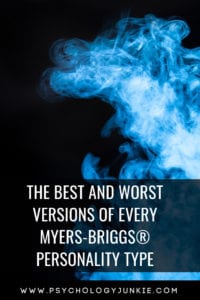
Subscribe to Our Newsletter

Want to discover more about personality type? Get the inside scoop with Susan Storm on all things typological, along with special subscriber freebies, and discounts on new eBooks and courses! Join our newsletter today!
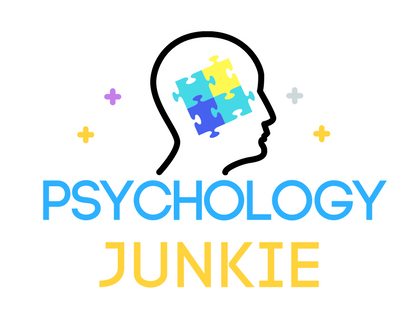

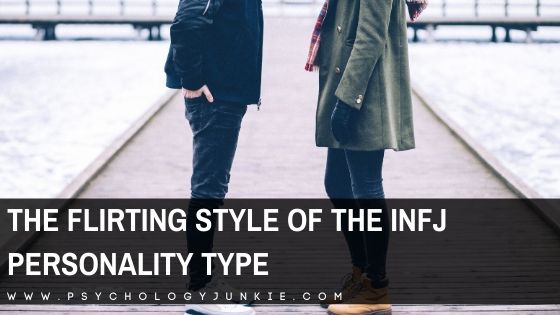
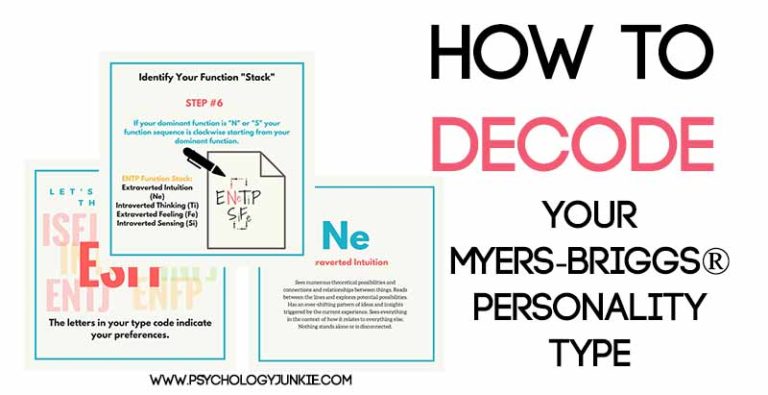
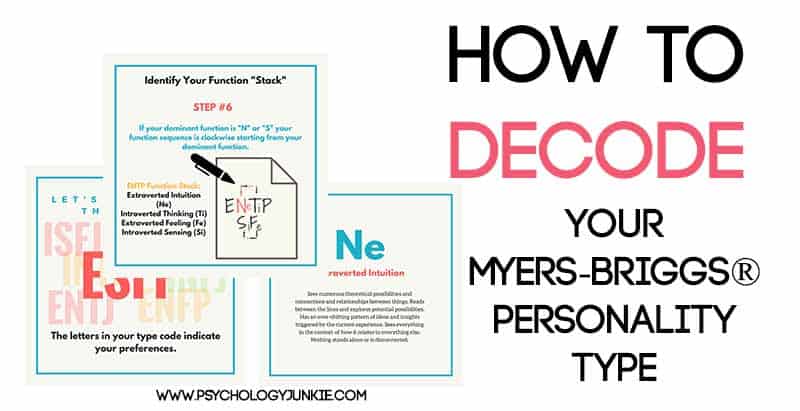


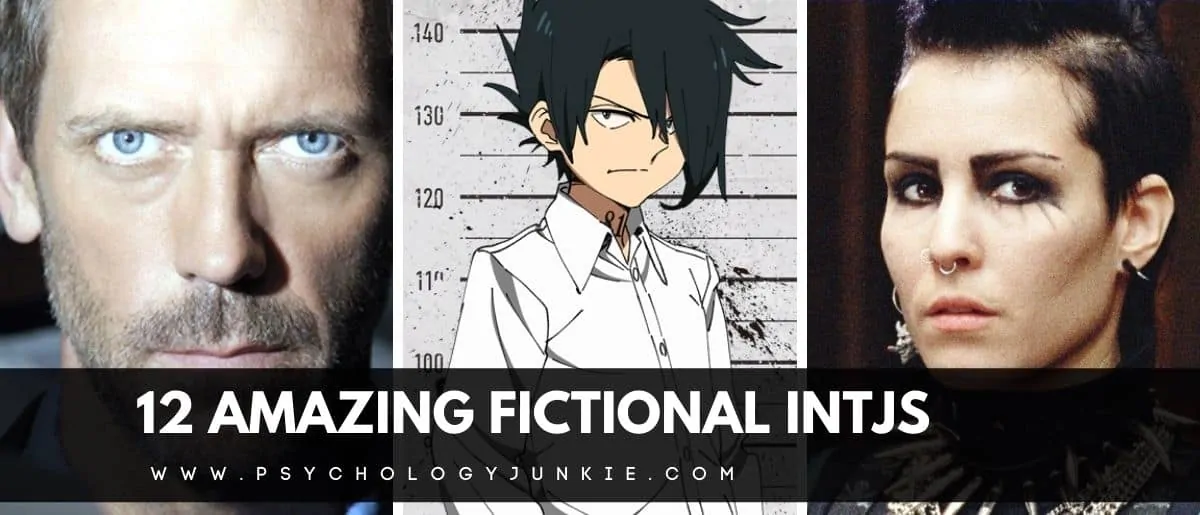


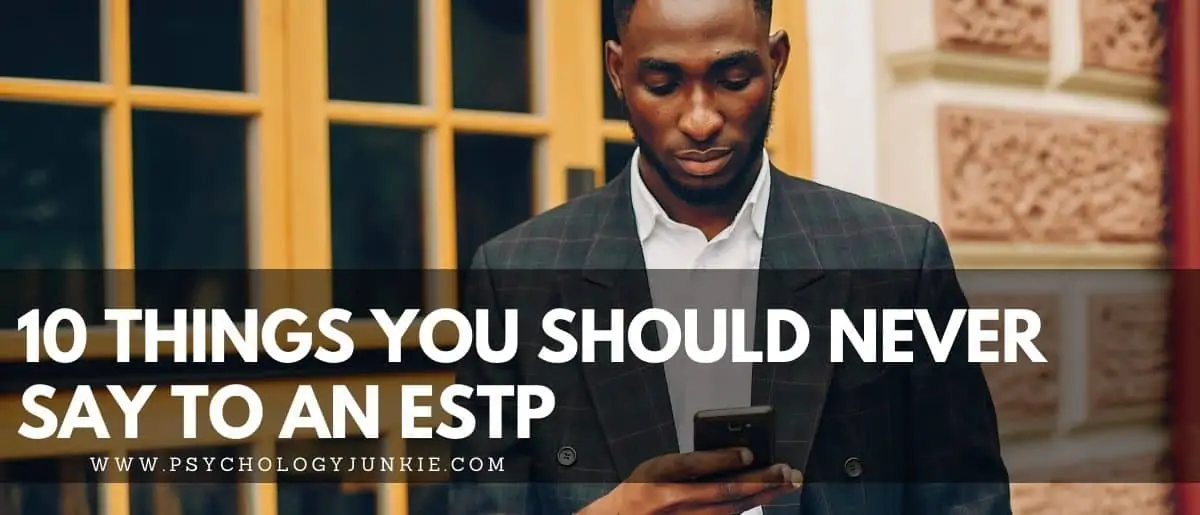
Hi. Interesting articles about personality types. What academic/professional credentials do you have to be able to have these authoritative description of best and worst?
Hi Kay! I’m a certified MBTI® practitioner so I’ve been trained by the Center for Application of Psychological Type in all things Myers-Briggs. I’m also working on my masters in psychology.